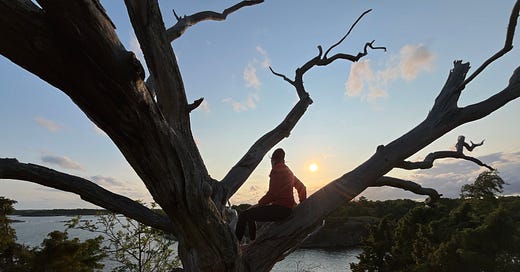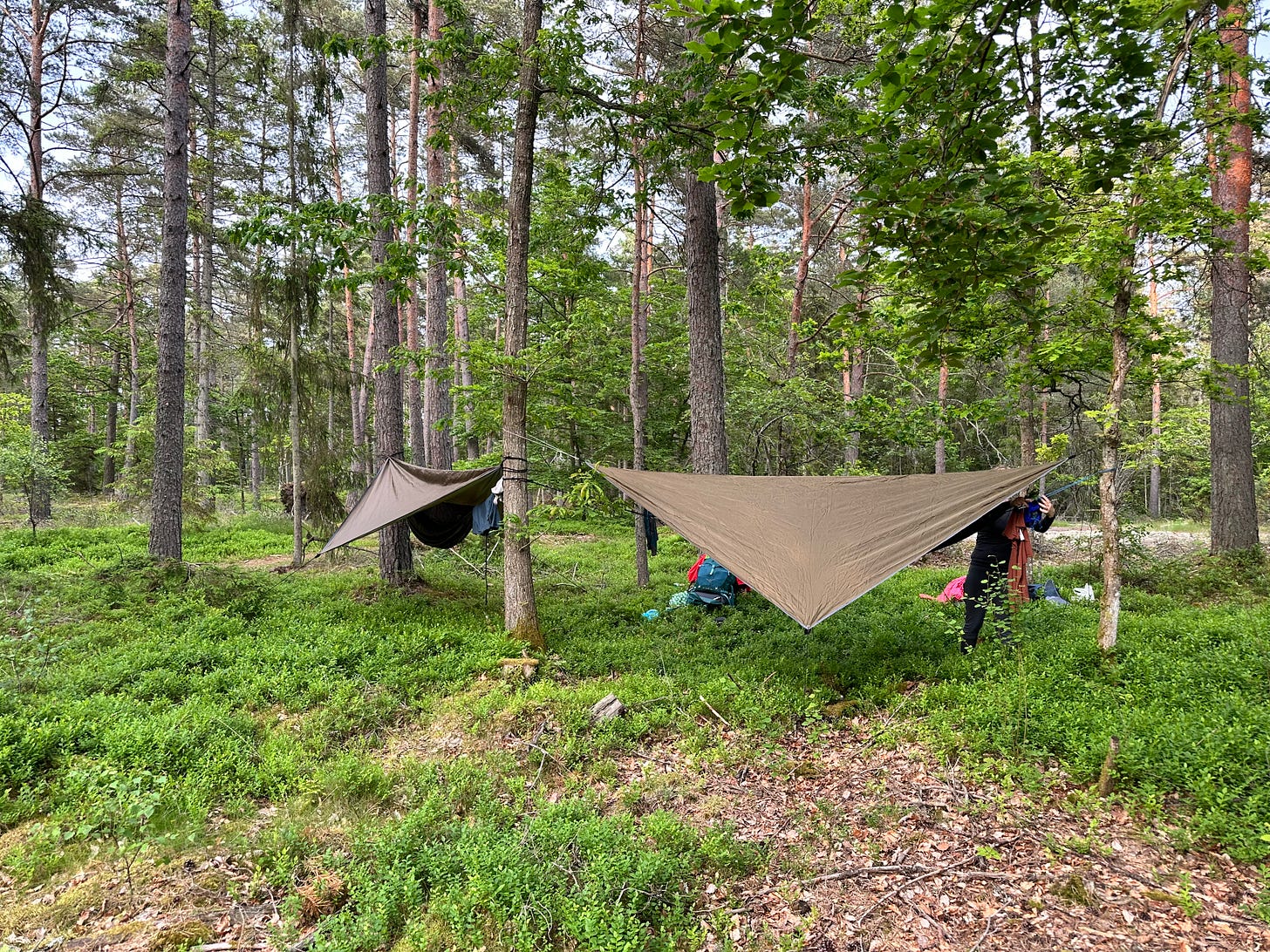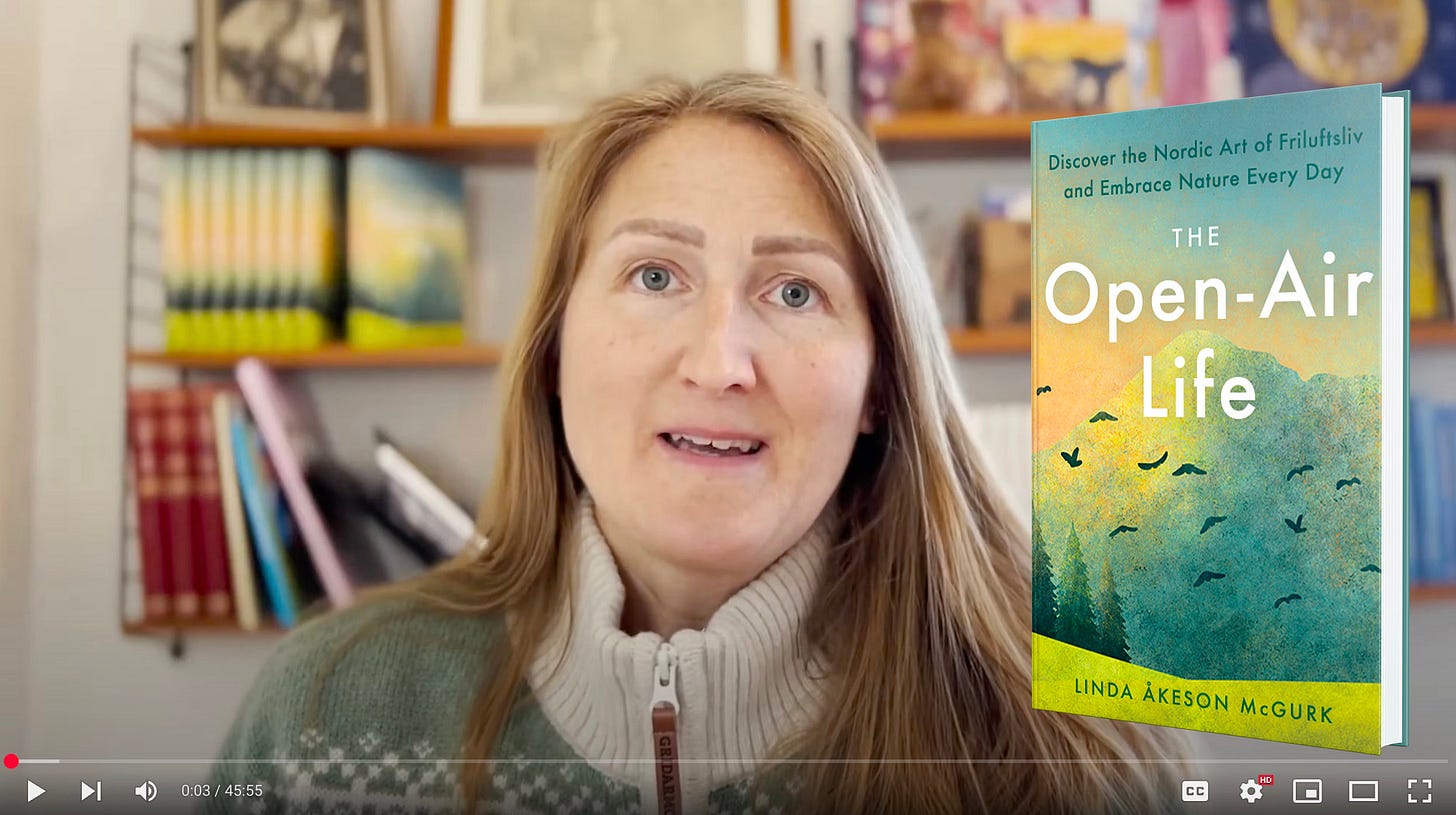The fight for public lands isn't over
On hiking, the Swedish right to roam, and what's at risk in America
A couple of weeks ago, a friend and I went on a four-day, three-night hike on the Blekinge Trail in southern Sweden. It’s a beautiful trail, stretching for 260km through lush deciduous forests, biodiverse cow pastures and scenic coastland. Part of the trail dates back to the Middle Ages, when this region still belonged to Denmark, and traces of that history remain scattered throughout.
The scenery, tranquility and historic significance alone would’ve made the trip worthwhile. But more than anything, the experience reminded me of the immense privilege of allemansrätten – the unique Swedish principle protected by law that gives everyone the right to roam on pretty much any public or private land. That means we can hike not just on official trails but find our own path through woods and countryside, as long as we respect crops, livestock and private dwellings. We can pitch a tent not just in designated campgrounds, but wherever we find a spot that speaks to us, as long as people can’t see us from their house. We can swim, paddle, ski, ride bikes and horses, and forage for wild edibles without asking permission from the landowner. And as long as there isn’t an outright ban due to drought, we can even make up a small campfire.
Just like the trail itself, the roots of this law stretch back to medieval times, designed to facilitate cross-country travel that back then would often take days or weeks. The belief that everyone should have access to Sweden’s countryside, regardless of whose name is on the property deed, has survived through generations. And for that, I’m deeply grateful.
In contrast, the U.S. – like most of the world – has taken a different path when it comes to land rights. While it’s a myth that Indigenous Americans had no concept of property before the arrival of the European settlers, many tribes saw the land as sacred and practiced collective stewardship. Early European settlers, too, enjoyed a kind of informal right to roam, especially on unenclosed land. But by the late 1800s, states began enacting trespassing laws, and over time, court decisions solidified landowners’ rights to exclude others.
Private property vs. public lands
Today, private property rights are king in the U.S and the Fifth Amendment guarantees landowners compensation if their land is opened to public use. That, combined with legal liability concerns, makes anything like allemansrätten unlikely.
But Americans do have something else: public lands. Over one third of the country – around 840 million acres – is managed by federal and state governments. Bureau of Land Management tracts. National forests. Wilderness areas. National wildlife refuges. National parks.
Not all of this land is pristine or protected – much of it is managed for multiple uses, like logging, livestock grazing, drilling, mining, hunting and recreation. Still, it includes some of the most popular trails and pristine scenery in the country. Here, you can hike freely, without encountering “No trespassing” signs (or, for that matter, an armed landowner, should you take a wrong turn). This land belongs to all of us. It’s perhaps the greatest expression of collective ownership the U.S. has – and arguably, its most cherished legacy.
That legacy is now threatened.
“A betrayal of future generations”
Recently, the House of Representatives proposed the sale of 500,000 acres of public land in the Republican budget bill. After immense public backlash, that provision was ultimately removed. But the Senate added it back – and made it worse. The current version of the bill would require 2 to 3 million acres in 11 states to be sold within five years, with up to 250 million acres eligible for sale.
In other words: Our forests, mountains, lakes, historic and sacred areas handed over to the highest bidder. Lost to drilling, mining, and development. Reserved for the wealthy few, while wildlife, ecosystems, and public access are pushed aside.
Outdoor advocates are calling this “the most extreme land sale plan we’ve ever seen, and it stands a real chance of happening with no oversight.” The Wilderness Society calls it “a betrayal of future generations.”
The good news? Public lands are one of the few things that unite Americans. Whether you're a climber, hunter, hiker, angler, or camper—you have a stake in this fight. Even if you never set foot on these lands, your children or grandchildren should have the chance to. And the landscapes, wildlife, and communities that depend on them deserve our protection.
As I head out for another weekend of camping, I’m reminded once again of how lucky I am to live in a country where the right to roam is written into law and rooted in respect for the land, shared responsibility, and centuries of cultural tradition. Without a version of allemansrätten, public lands are the closest thing Americans have to nature that belongs to everyone—not just the privileged few.
But that access isn’t guaranteed. It has to be protected, defended, and cherished. Because once the trail disappears behind a “No Trespassing” sign, we may never get it back.
P.S. Scroll down for information on how you can protest the public land sales.
One thing to contemplate
“I recognize the right and duty of this generation to develop and use the natural resources of our land; but I do not recognize the right to waste them, or to rob, by wasteful use, the generations that come after us.”
-Theodore Roosevelt
Two things to listen to
1. Tell Congress to say NO to public land sales using this form from the Outdoor Alliance. Then share the link with others. This is one small thing we can do that can have a big impact if we all do it together. And do it now – the Senate votes on the reconciliation bill in two weeks.
2. Get away from screens and the 24/7 news cycle and celebrate the Summer Solstice. In the Northern Hemisphere, the astronomical start of summer will occur on June 20-21, depending on your time zone. This is the day of the year with the most hours of daylight, so make sure to get outside and enjoy it!
Three things to check out
1. I was recently interviewed for the Adventure Nannies Summit Session and podcast, where I chatted about everything from the benefits of outdoor play in all types of weather to the Nordic philosophy of friluftsliv (open-air life).
2. Are you wondering at what age children can start playing outdoors unsupervised? This British article suggests gradually giving children more freedom to explore alone. What are your thoughts?
3. This TED Talk by Damon Gameau will change your whole perspective about the reasons for the challenges currently facing the planet. Watch it!
Buy The Open-Air Life and get access to closed webinar
My second book, The Open-Air Life: Discover the Nordic Art of Friluftsliv and Embrace Nature Every Day, is about to hit an important milestone! To get there, I’m offering a special treat if you order a copy by June 15 - a link to my closed webinar Woods Over Worksheets on setting children up for success through outdoor learning. Just order the book from one of the links below, or a bookshop of your choice, then email me a copy of the receipt, and I’ll send you a private link to the webinar.
Bookshop
Amazon US
Amazon CA
Barnes & Noble
See you outside!
Linda
Some housekeeping…
If you can’t find my newsletter, check your spam folder. And please mark this address as ‘not spam.’ If the newsletter isn’t in your spam folder either, you should look in the Promotions tab.
You can always read my posts on my Substack home page.
You might also like…
The perks of being a lazy gardener
We weren’t made for a spring like this one
These are OUR lands - and they need us
Do not disturb, do not destroy
Before you go...
I have a curated selection of some of my favorite children's outerwear at Outdoor School Shop. When you shop through the link, I earn a small commission at no extra cost to you. Check out the Rain or Shine Mamma shop at ODSS here.
I've published two books: There's No Such Thing as Bad Weather and The Open-Air Life. If you enjoyed them, you can help others find them by leaving an Amazon review here and here respectively.
I often get interviewed about outdoor play and nature connection at various podcasts. You can find all the episodes I've participated in here.
Do you have a book club or head up a nature play community? I love doing virtual author visits! Just hit reply to this message to connect.
I do virtual speaking events for corporations, non-profits and online summits. You can read more about that here.
Do YOU have something going on in the nature connection space that you think this community should hear about? If so, hit 'reply' and let me know what you're up to - I'd be happy to share!






